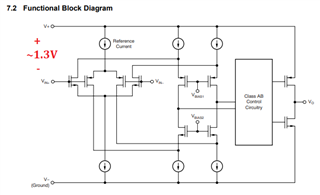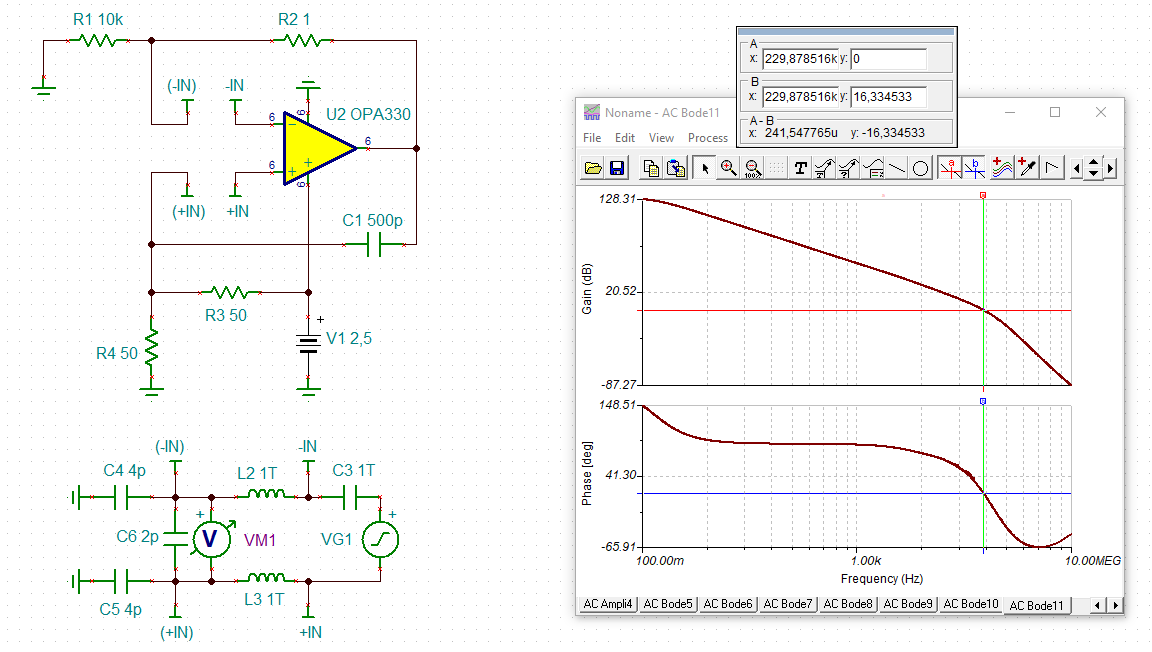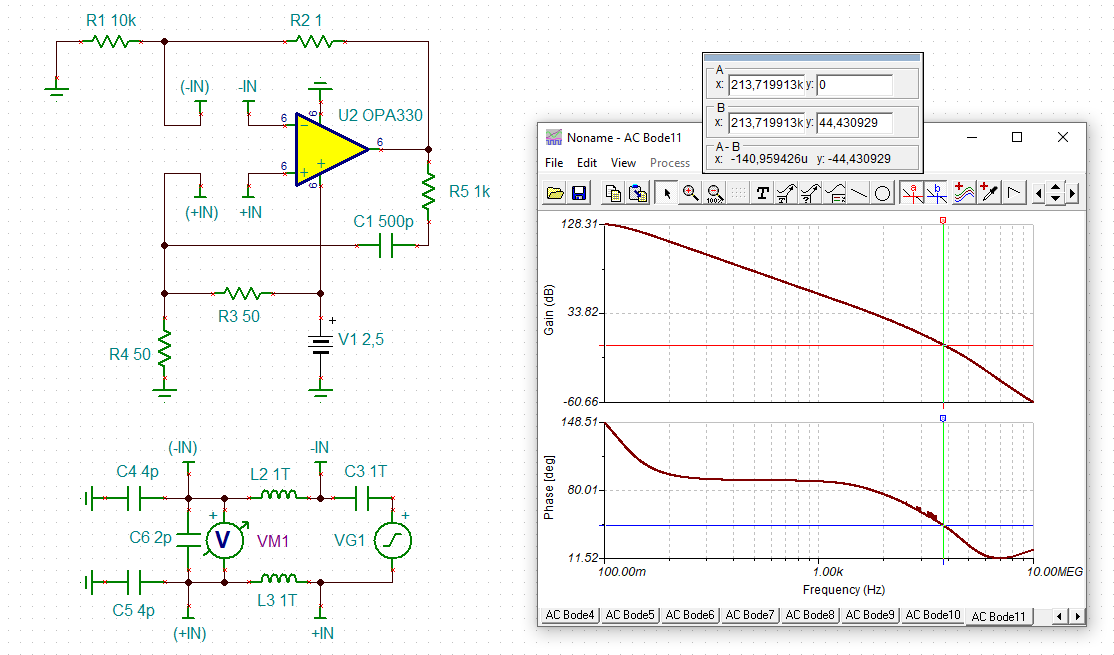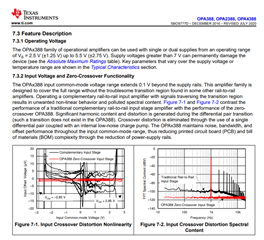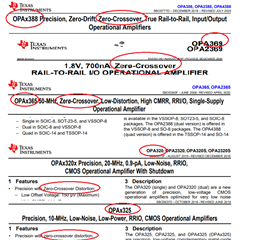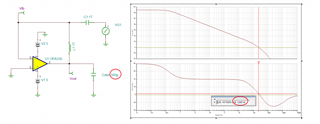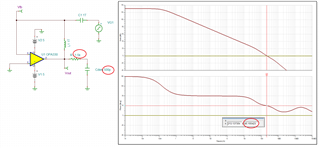Other Parts Discussed in Thread: LM7705, , OPA388, OPA369, TINA-TI
I am having trouble with an active attenuator I designed as part of a piece of internal test gear.
I have a question open on stackexchange here with some additional detail.
The gist is that I have an attenuator circuit that will ultimately turn a +/- 10V signal into a +-12mV signal offset from 0V by 1.25V
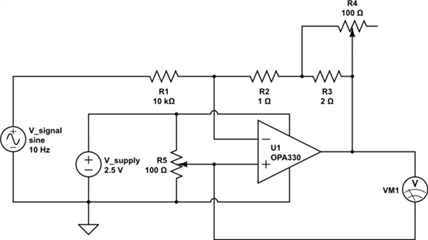
The issue that with the circuit as drawn, with the midpoint set by R5 configured for 1.25V I get a non-linear output, if I bump it up to 2.5V things seem to behave well. On further inspection of the datasheet I noted that section 9.1.6 Achieving Output Swing to the Operational Amplifier Negative Rail indicated that to have precise results down to the rail that I would need to try a pulldown resistor. I had assume that being well within the rated 30mV output swing this would not be required. However a 20k resistor to -5V, or a 4.7k to 0V seemed to tidy up my output greatly and return it to linearity.
The second thing I noticed while completing this testing was that the output seems to shift significantly when adjusting the midpoint i.e. I get in the order of a 1mV change in offset for my output if I shift the midpoint reference by 1V. I haven't had to do many calculations for CMRR but I believe this comes out at around 60dB instead of the 100+ dB specified in the datasheet.
While putting the 4.7k pulldown solves my linearity, and the midpoint wont actually be adjusted during my application so everything will be ok, I would like to know what I missed while coming up with my design and what in the datasheet I should have been looking at to prevent making these two mistakes.
The below shows the results of my testing with various midpoint references and different connections of a 20k pulldown.




